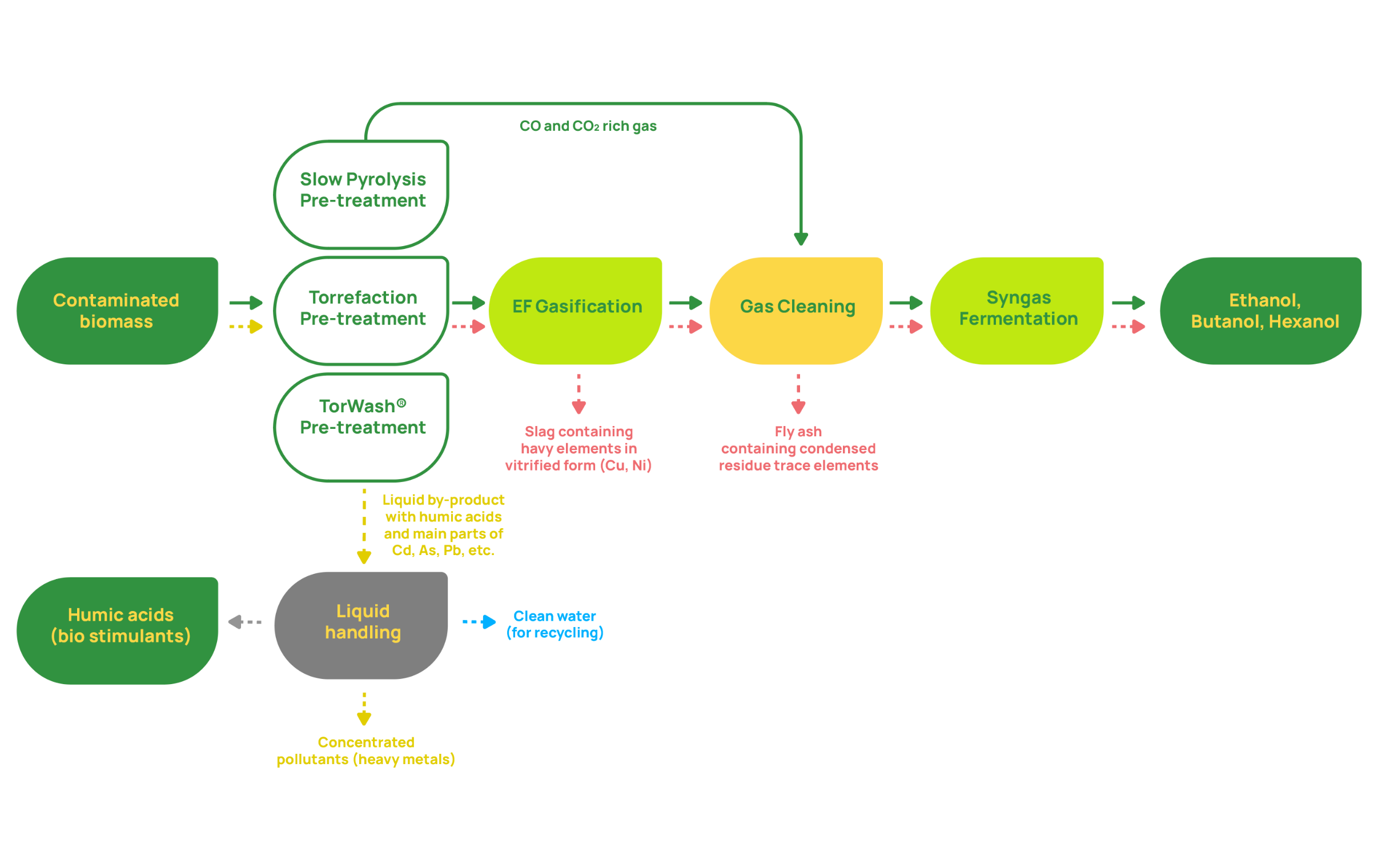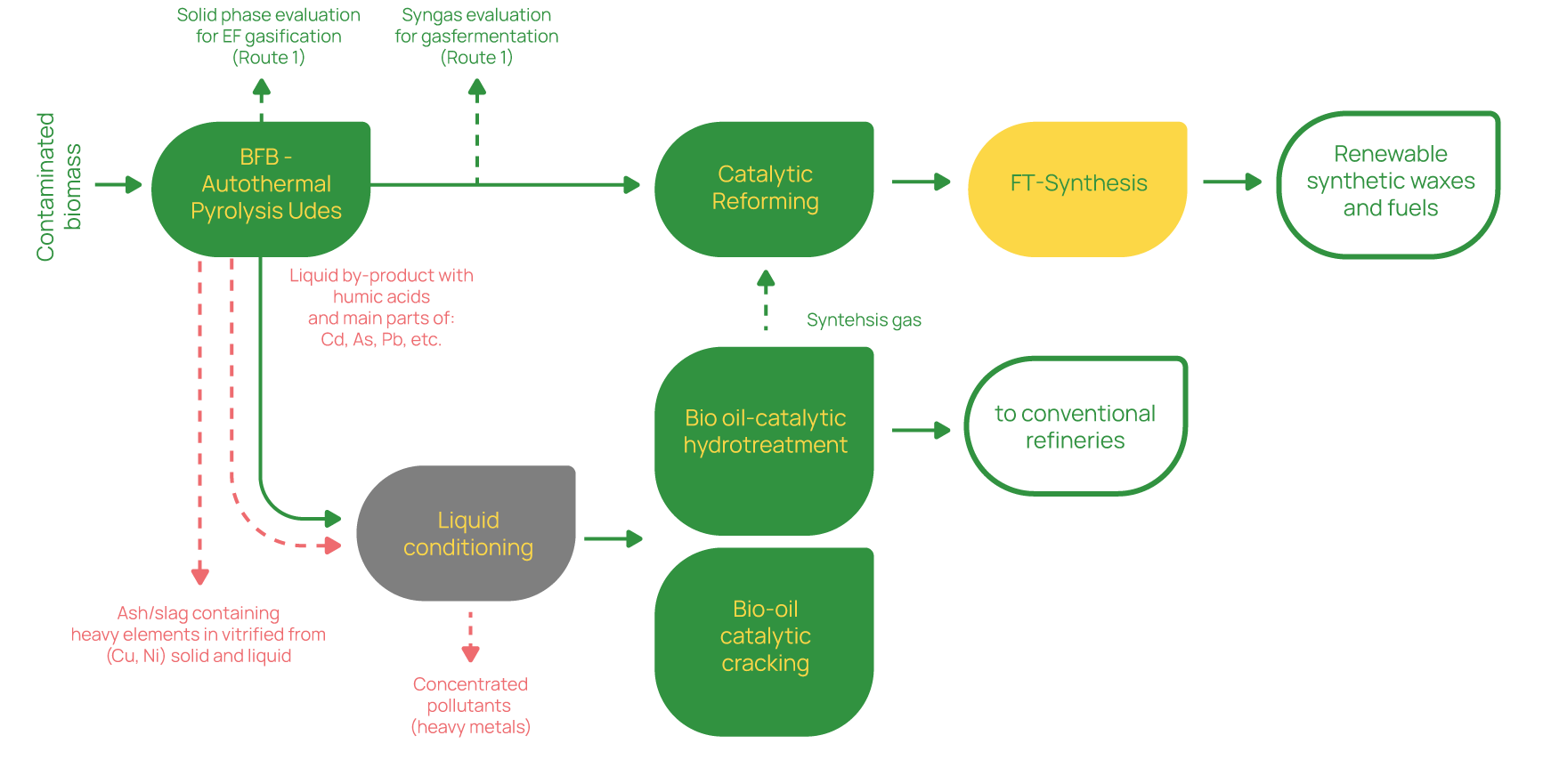Biofuel Production
Low ILUC-risk biofuels, bioliquids and biomass fuels are defined in the EU Renewable Energy Directive as those fuels produced in a way that mitigates indirect land use change (ILUC) emissions. This can be either because they are produced from biomass resulting from crop productivity increases, or because they come from crops grown on abandoned or severely degraded land and thus not contributing in land competition with food and feed crops.
In GOLD, the crops are grown in contaminated land that cannot be used for food production and often are abandoned or degraded, thus meeting the requirements of the EU regulation for low-ILUC risk biofuels.
Biofuel conversion routes
Two conversion routes based on thermochemical processes are used in GOLD
Conversion route 1
High Temperature Entrained Flow Gasification of pretreated biomass, that produces a clean syngas which is further fermented into liquid biofuels.
This pathway has the following four main advantages:
- Collection of metal(loid)s in a non-leachable vitrified form
- Additional separation of the pollutants in the pre-treatment phase
- Avoidance of high pressures in the entrained flow gasification by the use of syngas fermentation, leading to smaller scale of the technology

Conversion route 2
Autothermal Biomass Pyrolysis with the subsequent upgrading of the bioproducts into refinery-compatible intermediates and Fischer–Tropsch Fuels. This pathway represents a technological solution with a high level of flexibility that:
- Provides a way to concentrate the metal(loid)s through pyrolysis of the contaminated biomass
- Produce organic fluids (both gaseous and liquids) for the production of liquids through two different ways
- Can be integrated into biorefinery units or deployed in synergy with conventional fossil fuel refineries

Synergies between the two routes will be deployed at the biomass pretreatment stage that employs the TNO TorWashⓇ process by exchanging information on the residual metal(loid)s contamination after pretreatment, at the gasification stage using the residual char of the 2nd route as feedstock for gasification, and at the fermentation stage, using pyro-gases produced in the 1st route as feedstock for fermentation.

